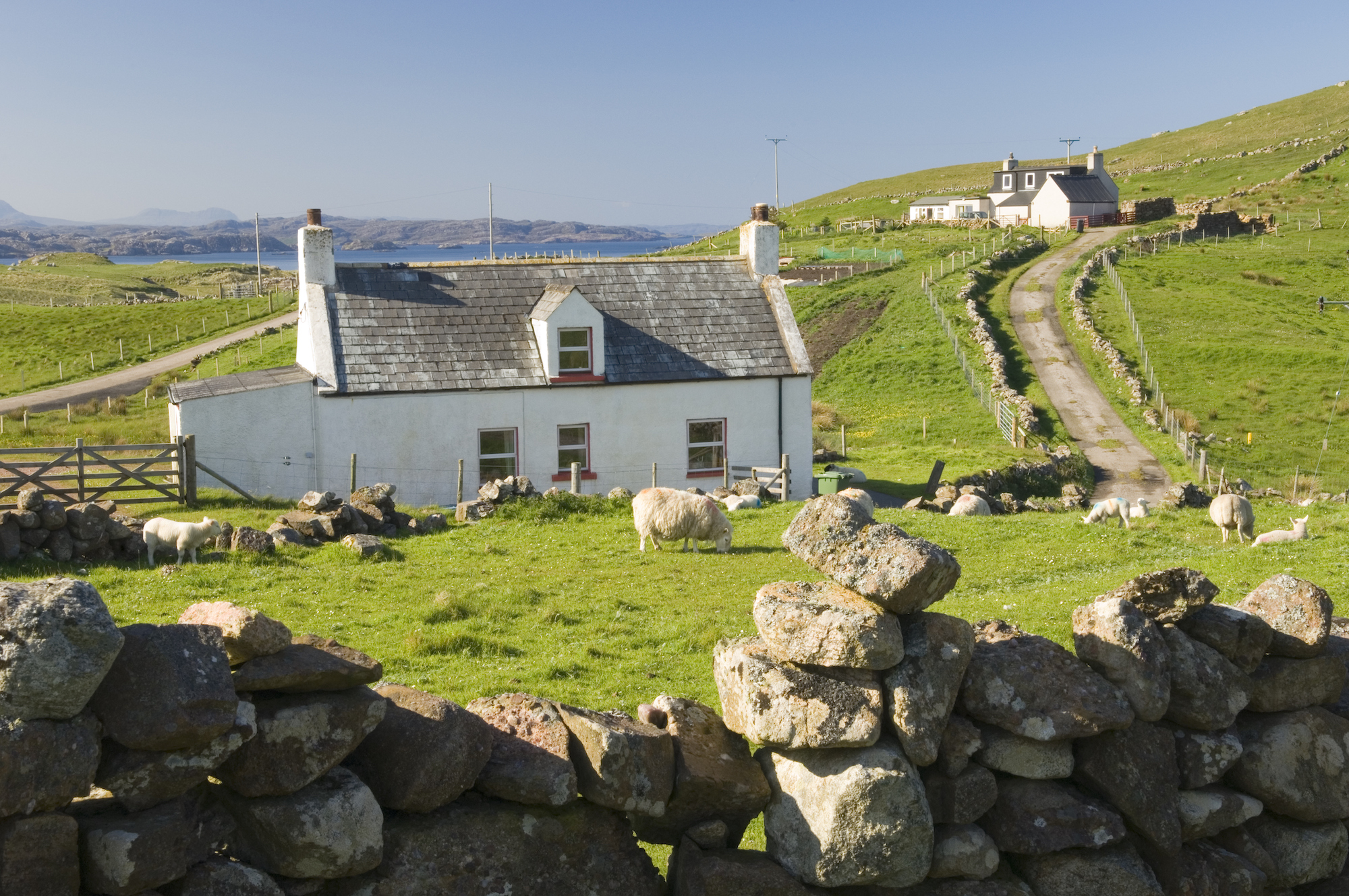Biomass
A biomass heating system uses a fuel source that comes from plants or animals.

Biomass could be anything from crops to manure. However, most biomass heating in Scotland uses wood from trees. The wood is processed into pellets, chips, or logs.
What is a biomass boiler?
Nearly all boilers burn fuel to heat water. Hot water flows to your radiators, causing them to warm up.
A biomass boiler works in the same way. The difference is that instead of burning oil or gas, a biomass boiler burns wood.
A biomass boiler can also provide hot water to your home. Firstly, the boiler heats up hot water, then stores it in a hot water cylinder.
Some biomass boilers have a fuel store which automatically fills the boiler with wood pellets or chips. However, if your boiler uses logs, you will need to load it yourself.
Different types of biomass boiler
Most biomass boilers use wood for fuel, but that wood can come in very different forms. The main types of wood fuel for biomass boilers are pellets, chips and logs.
Some biomass boilers (known as combination boilers) can use more than one type of wood fuel.
A pellet boiler burns wood pellets to provide heat and hot water to your home.
The pellets are made from waste wood products, such as sawdust and woodchips.
Pellets are usually sold in 15kg bags. Tankers can deliver pellets by the tonne. The tanker pours the pellets into your biomass boiler’s hopper (storage container). Finally, the hopper feeds the boiler when fuel is required for heating or hot water.
The pellets burn very efficiently and create an almost smoke-free fire.
Wood chip boilers are very similar to pellet boilers, but are usually much bigger. This means they’re well suited to larger-scale heating projects. You might find a wood chip boiler heating a farm, a hospital, or even a whole community.
A wood chip boiler burns small pieces of wood ( chips) to provide heat and hot water to your home.
Wood goes through a “chipper”, which cuts the wood into chips. You can buy wood chips in bulk. Alternatively, if you have your own wood supply and a chipper, you can make your own.
The chips go into a fuel store. Usually, this is a large container close to your boiler. When the boiler needs fuel, machinery moves the chips from the fuel store to the boiler.
A log boiler burns logs to provide central heating and hot water to your home.
A heating system with a log boiler will also have a thermal store. This means that the heat doesn’t need to be used right away – it can be kept until it’s needed.
Most thermal stores are large tanks, filled with water. The boiler heats the water in the thermal store. Since thermal stores are well insulated, they hold this heat for several days. Over those days, the heat provides central heating or hot water, without burning more logs in the boiler.
Logs are available from local suppliers. If you have your own supply of wood, you can cut your own logs.
Logs are added to the boiler manually. Before burning, they need to be properly dried out.
Gasification of biomass involves releasing gas from wood. Firstly, superheating the wood produces gas. Next, the gas is burned to heat your home.
Like a log boiler system, a gasification boiler system includes a thermal store. This saves the heat until it’s needed around the home.
Biomass boiler grants
Home Energy Scotland offers grants for biomass boilers to homeowners in Scotland.
£7,500 of grant funding is available for installing a biomass boiler. A further £7,500 is available as an optional interest-free loan.
You might qualify for £9,000 of biomass boiler funding if your home is in a remote or rural part of Scotland. The option of a further £7,500 as an interest free loan is also available.
It’s important to note that Home Energy Scotland can only offer biomass boiler grants for homes where a heat pump is unsuitable. To find out more about heat pumps, see our air source and ground source heat pump guides.
For the most up-to-date information about biomass boiler grants, visit the Home Energy Scotland grant and loan page. Alternatively, you can call Home Energy Scotland free on 0808 808 2282.
Is biomass renewable?
There is disagreement over whether biomass is a renewable form of energy.
Supporters of biomass point out that burning wood only releases as much carbon dioxide as the tree stored over its lifetime. They argue that by sourcing wood from a local and sustainable forest, biomass can be a renewable form of energy.
Critics of biomass argue that burning wood releases more greenhouse gases than burning coal. There are also concerns over how cutting down trees worsens the biodiversity crisis, both in terms of habitat and soil quality.
At Changeworks, we believe the best route to Net Zero is through the electrification of heat, i.e. heating our homes with electricity from a renewable source. However, we also understand that there are some cases, especially in rural Scotland, where a renewable electric heat source is simply not feasible. In these cases, biomass from a sustainably managed forest may be the best low carbon option.
Biomass boiler cost
The average biomass boiler costs £16,000. This will vary, depending on several different circumstances.
If you already have central heating, a biomass boiler should work with your current system.
However, if you need to install a heat store (as is usually the case if you choose a log boiler) there will be extra expense. If you don’t already have central heating, you’ll need to install this in order to use a biomass boiler.
Biomass boiler vs stove
A biomass boiler normally provides heat and hot water throughout your home. A stove normally only provides heat to one room.
If you don’t have room for a biomass boiler, a stove could be a good alternative.
There are two different types of stove:
- Log stoves
- Pellet stoves
You can install a back-boiler on either kind of stove. A back-boiler is a small boiler that attaches to the back of the stove. The heat from the stove heats the water in the boiler. This water provides central heating and hot water throughout your home.
Log stoves
Log stoves are the more traditional type of stove. You cut and dry the logs, then add them to the stove manually. A log stove needs fairly constant tending to make sure the fire doesn’t go out.
Pellet stoves
A pellet stove is basically a smart version of a log stove. The pellet stove has its own hopper (container) of pellets which it feeds into the fire.
Since pellet stoves have thermostats and fans, you can control the temperature of the fire with a remote control or through an app.
Pellet stoves need electricity to run. If your home is not connected to the electricity grid, you will need an alternative means of powering it. This could be solar panels or a generator, for example.

Changeworks delivers Home Energy Scotland in the south east and Highlands and Islands on behalf of the Scottish Government and Energy Saving Trust.
As well as providing free, impartial expert advice to thousands of people every month to help them to keep warm in their homes for less, they identify funding opportunities for households seeking to install energy efficiency measures.
For more information, give Home Energy Scotland a call on 0808 808 2282 or email and the team will be happy to help you.